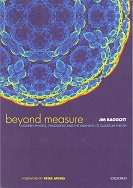As any theoretical physicist will tell you, quantum gravity is the biggest scientific problem of our age
The 20th century gave us two extraordinarily successful theories of physics:
quantum mechanics, which works astonishingly well at very small scales,
and general relativity. which beautifully explains gravity and the large-scale cosmos.
The trouble is they don’t work together.
Quantum mechanics assumes an arena of space and time,
as if everything were being played out against an invisible backdrop.
General relativity dispenses with the backdrop: space and time are relative,
and gravity is just the effect of matter moving in curved spacetime.
Theorists in the 21st century seek to transcend both,
by developing a single, joined-up account that can explain the behaviour of the universe at quantum scales.
They seek a theory of quantum gravity.
There are two major approaches to quantum gravity, seen as rivals,
though at root they have much in common.
One, string theory, has been widely popularized, and arises primarily from the viewpoint of particle physics.
This book is about the other approach, loop quantum gravity, or LQG.
Less well known, it is gaining increasing interest and influence.
Starting from general relativity, it borrows many ideas and techniques from particle theories,
and predicts that space itself is quantum in nature.
Time emerges as an evolving sequence of jumps in the geometry of quantum space which form a ‘spinfoam’.
It’s all very abstract, but Quantum Space offers an opportunity to glimpse,
without any mathematical technicalities, the deepest, most fundamental contemporary ideas
concerning space, time, and the universe.
Lee Smolin and Carlo Rovelli have been leading players in the development of LQG,
and Jim Baggott frames the story around the work and life experiences of these two famous physicists,
who are close friends: their hopes, their frustrations, and their moments of triumph.
This is also their story.





